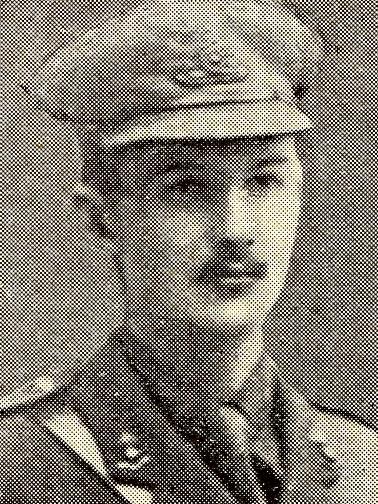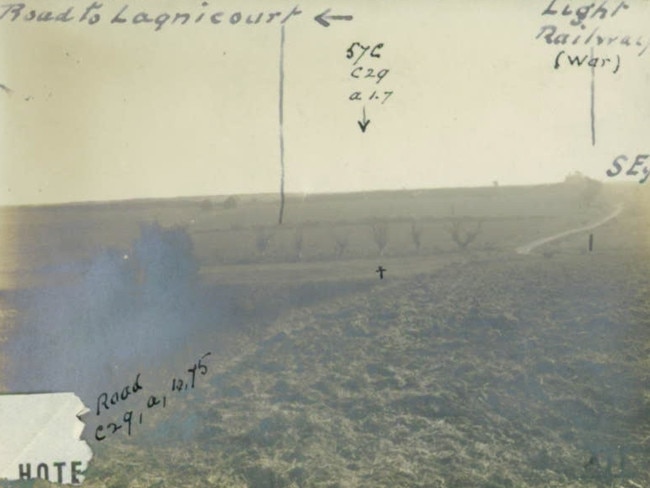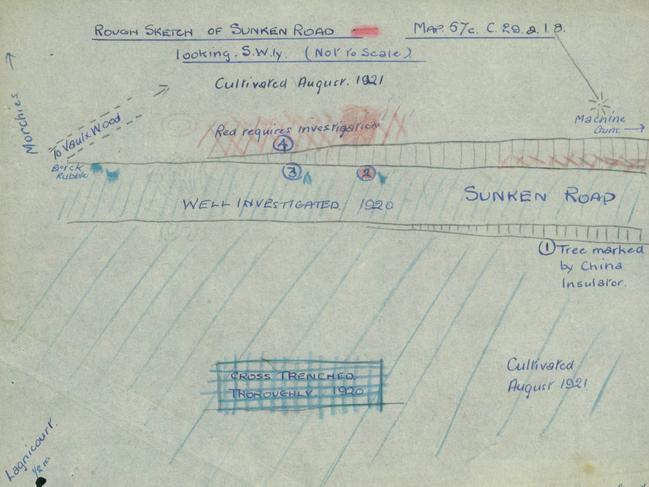German soldier gave map that was key to finding missing Digger
A map that led to the remains in France of a former Melbourne Grammar student turned soldier during WW1 came from an unlikely source.

Eric Hayter’s father never gave up hope of finding his body on the fields where he was killed in France fighting for Australia in World War One.
But the discovery came from the most unlikely source — a German soldier.
The heartbreaking, remarkable evidence of how his father fought for six years to find his remains has been uncovered for the first time — more than a century on.
A British archivist has found the map that a German soldier posted to Second Lieutenant Hayter’s family after the war that was the key puzzle piece.
“A German soldier sent the family his pocketbook, his home address was in it,” Andrew Fetherston, chief archivist at the Commonwealth War Graves Commission in England said.
The German soldier also sent a hand drawn map, at the time.
It was common in World War One, for German soldiers to bury allied troops and keep documents in the hope of passing them on to loved ones.


Second Lieutenant Hayter’s father Colonel Frederick James Hayter, who was living in England, used the map and his connections to search for his son, a former Melbourne Grammar School student.
A letter he wrote in 1922 to military authorities during his search detailed his opinion of where his son’s body would be found.
“From the evidence obtainable it seems most probable that 2/Lt Hayter’s dead body was seen on the road “about” 50 yards from (1) on the South side of the road,” his letter said.
“Height in bare feet 6 feet. Identity bracelet probably on right wrist.
“Teeth, a full set less 2 extractions in upper jaw … Four teeth to ensure articulation, gold …
“Cause of death a bullet wound in the head over ear but which side not known.”
But it was not enough to find his remains through regular channels.
However, Col Hayter wanted to build a memorial for his son, even if he was unable to find the exact location so he went to Lagnicourt-Marcel in France to try to buy the land where his son died.
“When he went to purchase the land from one farmer it was quite expensive, but a neighbour heard about it and offered to sell him land across the road which was cheaper,” Mr Fetherston said.
“When they were digging the foundations for the memorial, Col Hayter was there at the time and they found some remains.
“From the uniform and by two gold teeth they were able to identify him as his son.”

MORE NEWS:
Aussies join incredible global COVID-19 street art movement
Fire Fight sends out the cheques
We’re all in this together: A coronavirus novel
China ‘refusing’ to let WHO take part in COVID investigation
The memorial cross was finished and Second Lieutenant Hayter’s remains were kept there until after his father’s death when he was moved to an official war grave at the Lagnicourt Hedge Cemetery.
Second Lieutenant Hayter was 25 when he died, refusing to surrender to the German’s who had been rapidly advancing in the spring offensive of March 1918, which almost turned the war.
The young Australian had joined the war effort and was first in action at the Battle of the Somme in 1916.
He survived a gas attack in 1917 and was sent to England to recover.
But, like many others, and because of his rank, he was sent back to the front.
“It would have happened quite a lot, he was a junior officer and he would have been in charge of a group of men,” Mr Fetherston said.

“Some of the battalions were led by 18 or 19-year-olds. He died refusing to surrender, fighting to the last man to protect his gun. He would have had a service revolver.”
His name is on an honour roll at St Bartholomew’s Church in Sydenham, England, where the family lived during their search.
Originally from Queenscliff in Victoria, Lt Hayter had tried to destroy his artillery gun to stop it falling into the hands of the Germans.
In 1918, The Imperial War Graves Commission started burying 1.1 million Commonwealth troops killed in the war.
They also collected many documents and artefacts, some of which have now been released, including 3000 documents and 16,000 photographs.

